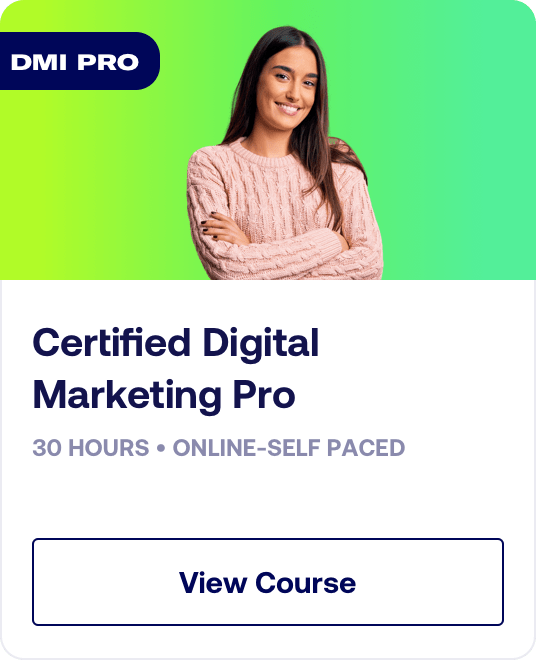Digital Marketing - Study Notes:
Personalization and segmentation using AI
Recent advances in AI technology have fundamentally changed how marketers approach audience segmentation with a view to developing highly personalized messages and experiences. Through machine learning algorithms, AI can automatically determine the most relevant variables for different customer groups, helping to tailor marketing messages or campaigns more precisely than traditional methods. For example, Spotify uses AI-driven personalization in its music recommendations. In this way, marketing becomes a blend of science and art.
Example: L’Oreal
L’Oreal uses AI to segment its audience and recommend relevant products. It captures data from users through surveys and website analytics to understand their age, skin type, and skin concerns. It then uses this data to create a variety of audience segments, each united by a distinct set of preferences. As a result, each visit to L’Oreal’s web properties can be tailored to the current visitor.
Integrating AI data insights with human intuition
AI can complete many tasks effectively, but it can’t do everything. This is why it is so important to take a balanced approach when using AI for data interpretation. This is why L’Oréal insists on human oversight of all its AI-driven digital marketing decisions.
While AI offers unparalleled data analysis capabilities, the integration of these insights with human intuition and contextual understanding creates a more holistic and effective marketing strategy.
AI can provide the ‘what’. What has happened? What is the data telling you? For example, the data might show that only 5% of female customers under the age of 30 in Australia buy from you more than once.
Human marketers are often needed to understand the ‘why’ behind the data. Why did this happen? Why do people feel this way? For example, analyzing the data might reveal that the content that was targeted at female customers failed to resonate with them.
Real-time data analysis and decision-making
AI’s ability to analyze data in real-time has had a transformative effect on marketing tactics. Algorithms can adapt to live data feeds, making adjustments to campaigns on-the-fly based on real-time analytics.
This level of adaptability allows for agile decision-making and responsiveness to market trends as they happen. Adding this capability to a business can deliver a significant competitive advantage in today’s digital landscape.
Example: Procter & Gamble
Procter & Gamble uses an AI system called PaveAI to improve the speed and quality of its decision-making. This technology processes Google Analytics data from 300 million web visitors per month. It then turns that data into automated reports that surface key insights for decision-makers.
PaveAI’s founder has said: “Along with context-based knowledge, our AI allows us predict the value of each segment of users that visit a website. We then use natural language generation (NLG) to make these insights digestible to our businesses and customers.”
Example: Sanofi
In the healthcare sector, organizations often have to get relevant, up-to-date data quickly to medical professionals, so they can help patients more effectively. Content can be personalized for the healthcare professionals using a “customer journey” framework.
Sanofi needed to get its data to its doctors when they needed it. Using AI, it was able to seed content to the doctors when it was most relevant, rather than having to wait for a detailed data analysis. Sanofi’s approach was to use the data as it got it.
Competitive intelligence through AI
Using AI for competitive intelligence is transforming the way marketers assess their brand’s position in the marketplace. Advanced algorithms can scrape and analyze public data from competitor websites, customer reviews, and social media to generate insights that are both deep and actionable.
As a result, marketing decisions are not just reactive but proactively aligned to take advantage of a brand’s competitors’ weaknesses and the prevailing market trends.
Example: Owler
For example, Owler uses AI to help businesses track their competitors’ news activities. Owler’s platform uses machine learning to analyze news articles, press releases, and other sources of information to provide insights on competitors’ business activities. Users can use this insight to shape their own activity, based on broader market trends and any weaknesses they identify in their competitors’ strategies.
Optimizing marketing spend with AI
One of the most pressing challenges for marketers is to justify and optimize their budget allocation. AI-driven analytics platforms can track the performance of every dollar spent across channels in real-time, enabling dynamic adjustments.
Example: Skai
Skai’s AI platform for omnichannel marketing connects data from multiple channels to provide visibility into real-time performance. This empowers marketers to shift budget away from low-performing campaigns. For instance, if a Bing campaign is performing poorly, the budget can be moved to Amazon or Google where results may be better.
This transforms marketing spend into an investment optimized for the highest returns. And this, in turn, helps you to refine the strategic decision-making process.
Back to TopChristopher Coomer
Chris is a results-driven VP of data, analytics, and business intelligence driving data management, analytics strategies, and technical architecture to scale optimized enterprise operations. As a trusted advisor and strategic business partner, Chris develops meaningful data insights and infrastructures through business intelligence and data analytics strategies to optimize business functions and drive impactful ROIs. Chris is also an enthusiastic and passionate educator in the field of data and analytics and marketing at The University of Tampa.

Cathal Melinn
Cathal Melinn is a well-known Digital Marketing Director, commercial analyst, and eommerce specialist with over 15 years’ experience.
Cathal is a respected international conference speaker, course lecturer, and digital trainer. He specializes in driving complete understanding from students across a number of digital marketing disciplines including: paid and organic search (PPC and SEO), analytics, strategy and planning, social media, reporting, and optimization. Cathal works with digital professionals in over 80 countries and teaches at all levels of experience from beginner to advanced.
Alongside his training and course work, Cathal runs his own digital marketing agency and is considered an analytics and revenue-generating guru - at enterprise level. He has extensive local and international experience working with top B2B and B2C brands across multiple industries.
Over his career, Cathal has worked client-side too, with digital marketing agencies and media owners, for brands including HSBC, Amazon, Apple, Red Bull, Dell, Vodafone, Compare the Market, Aer Lingus, and Expedia.
He can be reached on LinkedIn here.

Clark Boyd
Clark Boyd is CEO and founder of marketing simulations company Novela. He is also a digital strategy consultant, author, and trainer. Over the last 12 years, he has devised and implemented international marketing strategies for brands including American Express, Adidas, and General Motors.
Today, Clark works with business schools at the University of Cambridge, Imperial College London, and Columbia University to design and deliver their executive-education courses on data analytics and digital marketing.
Clark is a certified Google trainer and runs Google workshops across Europe and the Middle East. This year, he has delivered keynote speeches at leadership events in Latin America, Europe, and the US. You can find him on X (formerly Twitter), LinkedIn, and Slideshare. He writes regularly on Medium and you can subscribe to his email newsletter, hi, tech.







